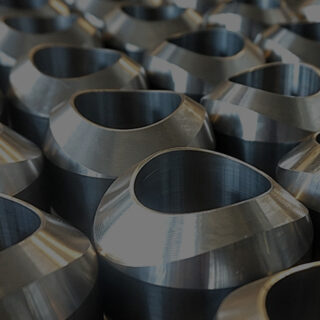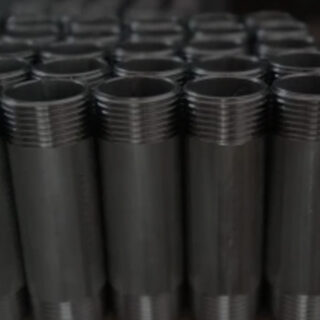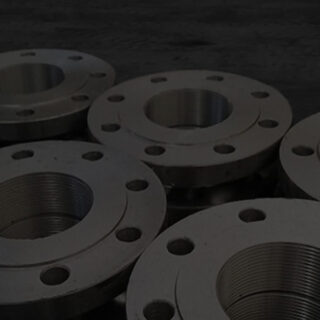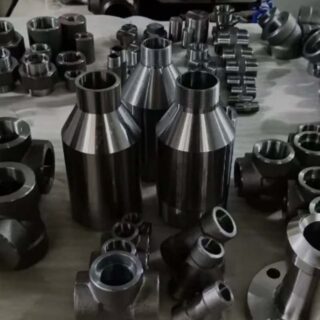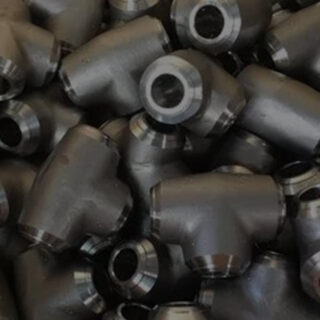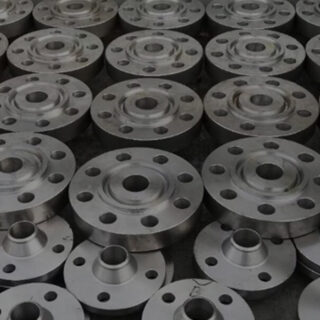
What is an Alloy Steel Unequal Tee?
To begin with, let’s try to define what an unequal tee is before going any deeper into the manufacturing process. A tee fitting is a T-junction that connects three pipes in a piping system to enable the redistribution of fluids. An unequal tee has a variation in the size of the outlets as the name implies. This design is most applicable where there is a requirement to alter the flow direction and incorporate pipes of different sizes
The material used in making these tees, alloy steel, is characterized by high strength, corrosion resistance and high-temperature capabilities. This makes it an ideal choice for industries such as oil and gas, petrochemicals and power generation
Step 1: Selecting the Right Alloy Steel
The manufacturing journey begins with selecting the right grade of alloy steel. The type of material to be used is very crucial as it determines the quality and durability of the end product. Few of the standard alloy steel grades are ASTM A234 WPB, ASTM A234 WP5, WP9 and WP11. These grades have distinct mechanical characteristics that make it possible to apply them in different industries as explained below
In this stage, the alloy steel is examined in terms of its chemical analysis, mechanical properties and other standards of the industry. It is thus important to uphold the required specifications in order to meet the quality standards and this cannot be possible if an Alloy Steel Unequal Tee manufacturer & exporter compromises on the set standards
Step 2: Cutting and Shaping the Steel
Once the raw material has been received and accepted it is then subjected to cutting and shaping operations. The alloy steel is normally purchased in flat forms or in the form of bars depending on the application of the steel. These are cut into smaller pieces depending on the sizes of the unequal tee required
Advanced cutting techniques such as the computer numerical control (CNC) cutting aid in precision and minimize wastage. The cut pieces are then shaped into the required form by means of forging, extrusion or casting as the case maybe
The process of forging involves placing the steel in a high temperature and then putting it under pressure in order to give it a certain shape. This method is preferred since it improves the strength and toughness of the alloy steel. While in the other hand, extrusion is the process of forcing the heated steel through a die to acquire the right shape. Casting is another process in which the molten steel is poured into a mould and allowed to cool and solidify in the shape of the tee
Step 3: Forming the Tee
The forming is an important step in the manufacturing process where the shaped alloy steel pieces are bent to form the tee shape. This step usually entails the use of welding or seamless forming processes
- Welding : The tee is made by welding three different pieces of alloy steel where two pieces are used for the straight portion of the tee and the third piece for the branch. The fitting should be very strong and thus the welds have to be perfect. PWHT is used to eliminate any residual stresses which may have been caused during the process of welding and to ensure that the mechanical properties of the steel are not compromised.
- Seamless Forming : The other type of forming is the seamless forming where a single piece of alloy steel is bent to form a tee. This process involves heating the steel and then bending the tee with the help of a hydraulic press or any other related equipment. Seamless forming is preferred due to the fact that it offers a consistent structure and strength of the tees

Step 4: Heat Treatment
The Alloy Steel Unequal Tee is subjected to heat treatment after the formation of the product. This process entails raising the temperature of the tee to a particular level and then cooling the tee under certain conditions. Heat treatment enhances the physical characteristics of the alloy steel for instance hardness, ductility, and the ability to withstand wear and tear. It also aids in the release of internal stress that may have been induced during the forming process
The specific heat treatment process may also differ according to the type and grade of alloy steel that is to be treated as well as the intended use of the steel. For instance, normalizing is employed to improve the grain structure while annealing is employed to make the steel softer for further working
Step 5: Surface Finishing
The final process of the manufacturing of the unequal tee is surface finishing which helps to improve the look and the protection against corrosion. The tee is then treated through processes such as sandblasting, pickling, and passivation to clean up the outer surface of the tee
- Sandblasting : Sandblasting is a process of cleaning the surface of the tee by spraying it with sand to remove scale, rust and other foreign materials. It also produces a rough surface that helps in the adhesion of other subsequent coats to be applied on the surface.
- Pickling and Passivation : Pickle is the process of placing the tee in an acid bath to dissolve any oxide scale and other contaminants on the tee surface. This is followed by passivation in which the tee is immersed in nitric acid to form a passive oxide layer that improves its corrosion resistance
Step 6: Inspection and Testing
The quality of an Alloy Steel Unequal Tee must be controlled strictly in the process of manufacturing. The finished tee also goes through a number of tests and inspections to meet the standard and quality that is expected of it. These tests include
- Dimensional Inspection : It guarantees that the tee has the right dimensions as required.
- Non-Destructive Testing (NDT) : Other techniques such as ultrasonic testing and radiography are employed in order to identify any internal flaws in the tee.
- Hydrostatic Testing : The tee is tested under high pressure water to see if it has any leakages and also to see if it can withstand the pressure required
Any tees that do not pass these tests are rejected or reworked until they meet the necessary standards
Step 7: Packaging and Dispatch
Once the tees have been through the quality assurance tests they are packed and handled with a lot of care to ensure that they are not damaged in any way during the transportation process. As a trusted Alloy Steel Unequal Tee manufacturer & exporter it is our duty to ensure that the product is supplied in the finest form possible. The tees are normally protected by a material and they are packed in wooden cartons or pallets for transport
Conclusion
The manufacture of an Alloy Steel Unequal Tee is a process that needs a lot of effort, time and work in order to produce a quality product. Beginning from selecting the right material right from the selection of raw material to the final polishing and testing each and every process is very important in order to produce a component that can withstand the severest of conditions. In industries that demand highly reliable and strong piping systems, the unequal tee is one of the fittings that cannot be done away with since it is an example of alloy steel design
You can Contact EBY Fittings today at inquiry@ebyfasteners.com to know more about the Alloy Steel Unequal Tee and their use in industrial projects












